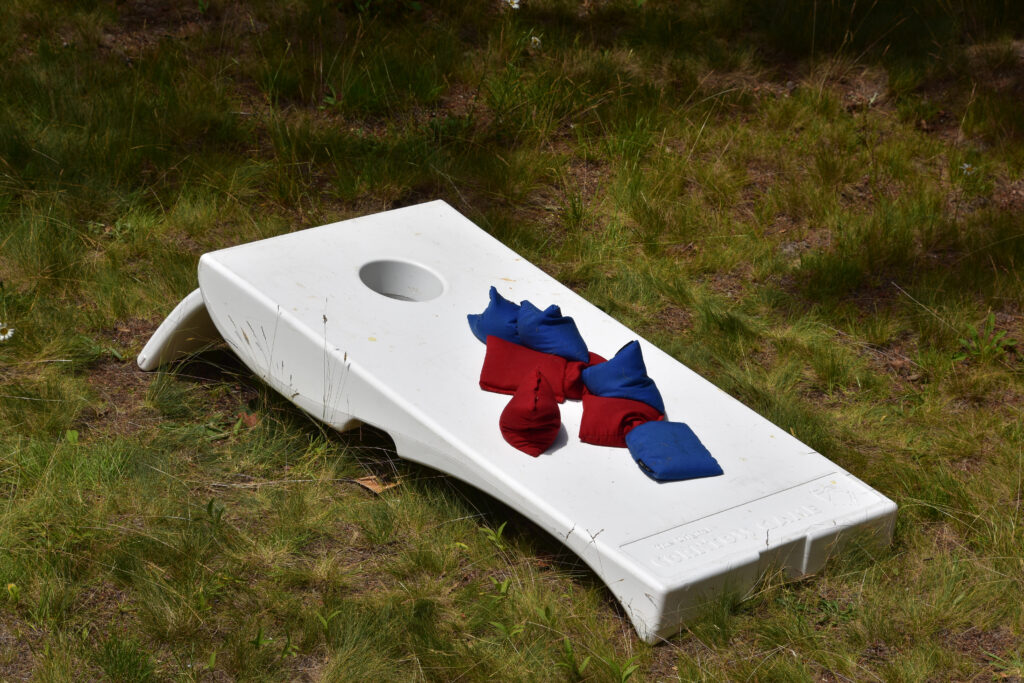
Cornhole game, one of the favorite pastimes of Americans is often played in social and family gatherings. There is a debate about its origin as some believe that it was the native Americans who discovered this game while others believe that it was Germans who migrated to America in the 17th century that introduced this game in the region.
The invention of the cornhole game is credited to a 14th Century German Cabinetmaker Mathias Kuepermann. It is believed that he saw some kids playing with rocks and decided to get them bags of corn kernels to make it safe for them and made a corn board for them using his carpentry skills. This led to the idea of a cornhole board.
Some native Americans are believed to hold the pride of invention of cornhole games. Some historians trace the history back to the Blackhawk tribe of Illinois who were believed to use animal bladders filled with beans into the holes made in the ground. This can be said to be the early version of the game. This however can be a folklore surrounding the game as no evidence exists to confirm this. Furthermore, a similar tale is told while telling the origin of a football game.
The other theory which has supporting evidence from the sources suggests that it was Mathias Kuepermann who invented this game. He saw children tossing rocks in the holes and wanted to make a safer version of it. Since he had good skills with wood and tools he invented the wooden board instead of rocks, he bought bags of corn kernels for kids. Later, the treated kernels had to be used to play with, to stop popping them in heat. However, this idea was not a success because it was believed to be unproductive spending. Later, this idea was brought to America by German immigrants where it was fully embraced especially in Cincinnati, Ohio.
Many farmers from Ohio claim their ancestral region to be Germany and also trail the origin of cornhole game back to their culture.
Last, but not the least, people from Midwest recognize Jebediah McGillicuddy from Kentucky as the father of cornhole board games. They believed that Jebediah was a genius farmer who invented this game in the 1700s to spend quality time with his friends and family in the backyard. Later, the game became popular and adapted by his other community members and eventually spread across the region
The roots of modern cornhole games can be traced back to an 1883 patent filed by Heyliger de Windt for a game called “Parlor Quoits”. It was an indoor version of one of the outdoor game of quoits. This version has an inclined board like used in previous cornhole versions but with a square hole. He patented this and then sold the rights to the Massachusetts toy company which marketed the game under the name of “Faba Gaba”. This version introduced further innovation by introducing two holes of different sizes. This added to more complexity of the game as the point values of both holes were different. Later, more innovations were brought until the final design of the board with one hole was achieved.
As an inventor, Mathias Kuepermann designed the basic version of the board suitable for kids. Later, when the game became popular, new board designs were introduced. More high-tech cornhole boards were introduced with premium material to improve the player experience. Now, innovations made it possible to track scores with the help of smart boards.
Though no concrete evidence is available to claim who invented the cornhole game. Whether it was the pastime of Blackhawk tribes, an invention by Mathias Kuepermann, a creation by Jebediah McGillicuddy, or an innovation by Heyliger de Windt, the truth involves a combination of all their efforts in shaping the modern corn games.
What is clear, however, is that Mathias Kuepermann’s invention and Heyliger de Windt’s innovation to organize the game through the American Cornhole Organization were pivotal in turning cornhole into the national sensation. Now, cornhole is a game enjoyed by millions and continues to grow in popularity both as a casual pastime and a competitive sport.